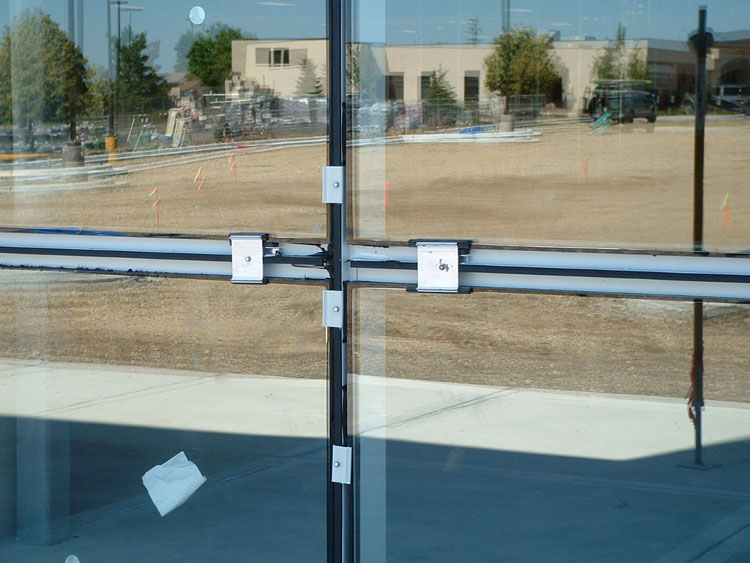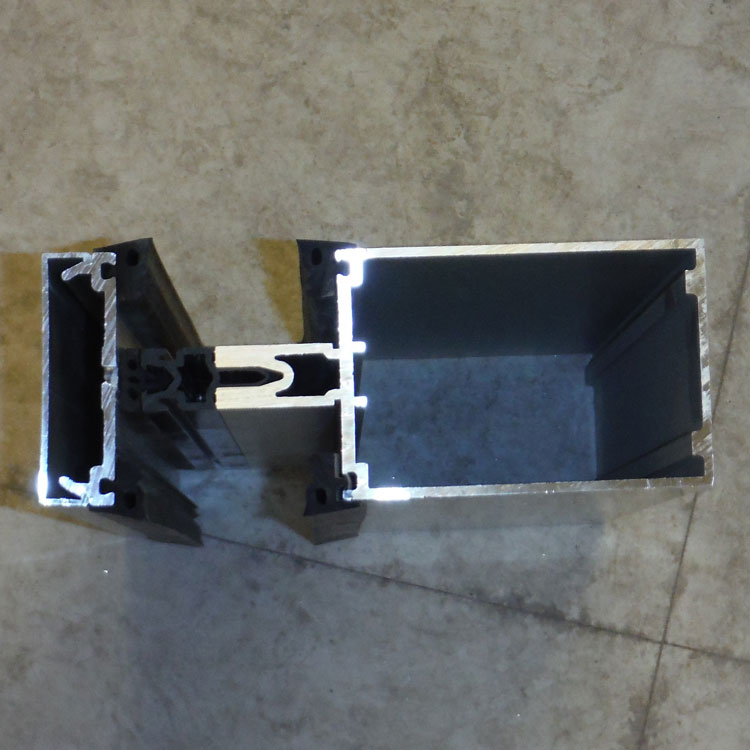
Article and photos by Gregory Havel
In the early 1970s, when the price of fuel and other energies began to rise, architects and engineers began to look for ways to reduce the amount of heat lost through and around windows.
Before this time, windows of commercial buildings were often a single plate of glass held in a rigid steel or aluminum frame (Photo 1). These windows had little or no insulating value, and heat was transferred easily from inside to outside the building through the single-pane glass and metal frame.

(1)

(2)
If the building’s owner preferred, insulating glass (Photo 2) could be installed in the metal frame to reduce heat loss. Insulating glass is sold under a variety of brand names. All of these brands are similar in that they use two panes of glass separated by an insulating and sealing strip around the edges. The cavity between the two panes of glass has its air replaced with one of the inert gases like argon at less than atmospheric pressure, which transfers heat more slowly than air.

(3)
Photo 3 shows a cross-section of a modern commercial window or store front, viewed from above. At the right (interior) is the main structural support, a rectangular aluminum tube, for this window and frame assembly. At the left (exterior) is the aluminum interior trim that holds the panes of insulating glass in place and seals the joints against the weather with plastic strips that are mounted in channels in the aluminum, and which press against the glass. Between these two aluminum members is a connection made of plastic, known as a “thermal break” or “thermal barrier,” which is a poor conductor of heat when compared to the aluminum. Insulating glass is installed in the channels at the top and bottom of the photo.

(4)
Photo 4 shows an aluminum store front with the insulating glass installed and held in place by aluminum clips fastened by screws. The aluminum exterior trim with the weather seal will be installed over these clips.
The use of insulating glass in these window frames with thermal breaks has changed interior fire behavior. Since each window is formed of two glass panes that function as an insulator, heat will build up more quickly in a room contents fire, with reduced time to flashover. These fires are less likely to self-ventilate due to the double glass panes. They will be more difficult to use for horizontal ventilation due to the double glass panes.
Firefighters must assume that most buildings today have thermal break window frames with insulating glass. We must adjust our preincident plans and operational procedures to accommodate this fact.
A more recent development is an enhancement of the thermal break system, and the use of triple-glazed window units, which use three panes of glass joined into a single unit. Use of these will further affect fire behavior inside buildings, and will require us to make more adjustments to the way that we work.
For more information on windows with thermal breaks, search the Internet for “thermal break” and “thermal barrier.”
Download this article a a PDF HERE (1.5 MB).
CORRECTION (7/3/2018): The original version of this story state that argon is lighter than air, which is incorrect.
 Gregory Havel is a member of the Town of Burlington (WI) Fire Department; retired deputy chief and training officer; and a 35-year veteran of the fire service. He is a Wisconsin-certified fire instructor II, fire officer II, and fire inspector; an adjunct instructor in fire service programs at Gateway Technical College; and safety director for Scherrer Construction Co., Inc. Havel has a bachelor’s degree from St. Norbert College; has more than 35 years of experience in facilities management and building construction; and has presented classes at FDIC International and other venues.
Gregory Havel is a member of the Town of Burlington (WI) Fire Department; retired deputy chief and training officer; and a 35-year veteran of the fire service. He is a Wisconsin-certified fire instructor II, fire officer II, and fire inspector; an adjunct instructor in fire service programs at Gateway Technical College; and safety director for Scherrer Construction Co., Inc. Havel has a bachelor’s degree from St. Norbert College; has more than 35 years of experience in facilities management and building construction; and has presented classes at FDIC International and other venues.
MORE CONSTRUCTION CONCERNS
Galvanic Corrosion
Corrosion Protection in Dry-Pipe Systems
Corrosion
Shotcrete
Double Flitch-Plate Girders

